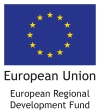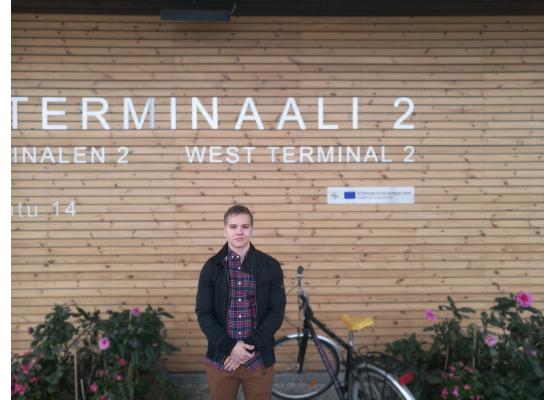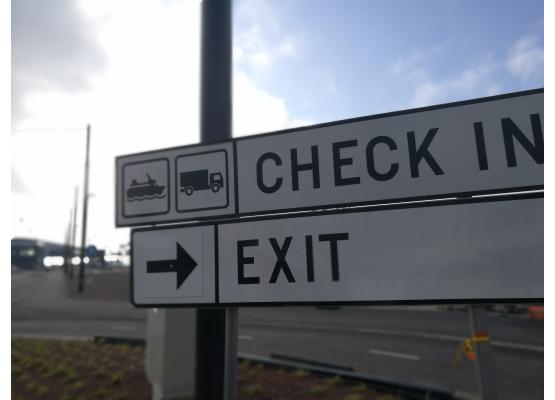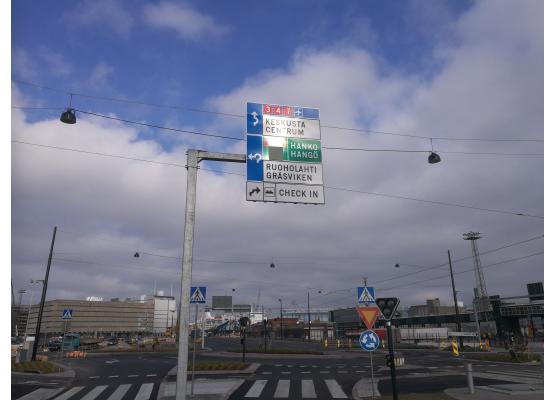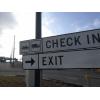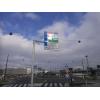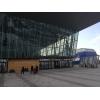In English
Project FinEst Smart Mobility tries to find ways to smoothen the travel between ports and also to reduce the disadvantages caused by the ever-growing flows of traffic in Helsinki and Tallinn with intelligent traffic solutions.
BUSY PORTS CAUSE HEAVY TRAFFIC IN HELSINKI AND TALLINN
The Port of Helsinki became the world’s busiest passenger port in 2017 when it passed Dover in the United Kingdom in the number of passengers. Most of the growth in passenger numbers comes from the ferry traffic between Helsinki and Tallinn, which with estimated eight million passengers yearly is one of the busiest passenger routes in the world. From the viewpoint of tourists and commuters the easily accessible terminals located in the city centres are ideal. The problem in both cities is that the passenger ferries carry not just tourists and commuters, but also large numbers of cargo trucks and cars, which jam the traffic in city centres while they ravel out from ferries and at the same time cause remarkable air and noise pollution. Problems with traffic are only expected to get worse, since the number of passengers and cargo is expected to at least double or even triple by the year 2050.
Project FinEst Smart Mobility, which is funded from the Central Baltic Programme, tries to find ways to smoother travel between ports and also to reduce the disadvantages caused by the ever-growing flows of traffic in Helsinki and Tallinn with intelligent traffic solutions. Project concentrates on smoother traffic chains linking different transportation modes by planning, developing and implementing ICT solutions to traffic. The aim is to reduce the travel time of passengers and cargo. Smoother traffic reduces carbon dioxide emissions and noise pollution in ports and cities.
” The main focus of the projects is the arriving and departing heavy traffic and personal traffic and also improving the link to Helsinki Airport. It is important to consider traffic as a whole,” project manager Kalle Toivonen sums up the project.
The most visible target group are the trucks delivering cargo. ”Heavy traffic is most visible for inhabitants and tourists in the port. It draws attention and might disturb,” says Toivonen and continues that it is important to develop the movement of passengers and collective traffic in ports in a way that city-dwellers would not feel that the port disturbs their daily lives. ” The most important thing is that moving around the port and the city is easy as possible for everyone.”
DEEPENING COOPERATION BETWEEN HELSINKI AND TALLINN
Background of the project is the memorandum of understanding (MoU) between Helsinki and Tallinn and Finland and Estonia to develop traffic connections between two cities and two countries. MoU agreement has different parts, which form the basis for different projects. FinEst Smart Mobility is considering the possibilities of technological solutions to smoothen the traffic flows between the cities.
Toivonen came into the project only after the preparatory phase, but he sees the projects as a part of the wider development plans in Helsinki and this has also been the main factor when choosing partners: ”Traffic is connected to the development of the new part of the city in Jätkäsaari. Natural partners in this are the cities of Helsinki and Tallinn. Forum Virium is involved as a city development company and city of Vantaa because of the airport.”
Toivonen thinks that the most important result of the project is that passengers feel that moving between the city and the port easier. Passengers were involved in the project right from the beginning: ”The project started with a passenger study. A consultant interviewed passengers onboard and in collective traffic on the challenges in traffic. After this, we created passenger profiles, which were used as a platform for the project. Different profiles were e.g. heavy traffic, tourists, and passengers on their way to the airport. We were looking for real experiences and challenges in traffic, around of which the pilots were planned,” tells Toivonen.
COMMON SOLUTIONS FOR COMMON PROBLEMS
One of the pilots in the project is an application directing the trucks to the port. With the application drivers receive a precise time and route for arrival into the port and at the same time the ferry companies have the same information. Another pilot tries to ease the purchase of a tram ticket with a mobile app that buys the ticket automatically when a passenger hops on tram. The simplification of the collective traffic tickets is continued in Central Baltic-funded project E-ticketing beginning in 2018. A third pilot searches with tendering solutions to smoothen the link between port of Helsinki and Helsinki Airport.
Toivonen thinks that the greatest challenge in the project is having so many stakeholders involved. There are all kinds of passengers and traffic moving in and out of the ports. ”We try to find a solution that is good for everyone. It is not possible to treat everyone equally, but as long as people do not feel discriminated and everyone can live with the solution,” ponders Toivonen.
According to Toivonen cross-border cooperation works best when all project partners acknowledge that solutions are common solutions for common problems: ”Starting point is a clear vision of common benefits and aims. We are developing common solutions that have to work in Estonia and in Finland. We are not doing this project for the problems of one city, but two.”
Suomeksi
SUJUVAMMIN EUROOPAN VILKKAIMPAAN MATKUSTAJASATAMAAN
Central Balticin rahoittama FinEst Smart Mobility -projekti pyrkii sujuvoittamaan kulkua satamasta ja satamaan sekä vähentämään kasvavien liikennemäärien aiheuttamia haittoja Helsingissä ja Tallinnassa älykkäiden liikenneratkaisuiden avulla.
KIIREISET SATAMAT AIHEUTTAVAT LIIKENNERUUHKIA
Helsingin satama nousi vuonna 2017 maailman vilkkaimmaksi matkustajasatamaksi, kun se ohitti matkustajamäärissä Doverin. Suurin osa matkustajamäärän kasvusta tulee Helsingin ja Tallinnan välisestä lauttaliikenteestä, joka kahdeksalla miljoonalla vuotuisella matkustajalla yksi maailman vilkkaimmista laivareiteistä. Satunnaisten laivaturistin tai kaupunkien välillä pendelöivän näkökulmasta Helsingin ja Tallinnan lähellä keskustoja sijaitsevat matkustajaterminaalit ovat helposti saavutettavissa. Ongelmaksi molemmissa kaupungeissa on muodostunut se, että tiheällä välillä liikennöivät matkustajalautat kuljettavat myös suuria määriä henkilöautoja ja raskaampaa liikennettä, joka laivoista purkautuessaan tukkii ahtaat kadut ja aiheuttaa runsaasti melu- ja päästöhaittoja. Jo nykyisellään ongelmia aiheuttavien matkustaja- ja rahtimäärien ennustetaan vähintään kaksinkertaistuvan vuoteen 2050 mennessä.
Central Balticin rahoittama FinEst Smart Mobility -projekti pyrkii sujuvoittamaan kulkua satamasta ja satamaan sekä vähentämään raskaan rahdin ja kasvavien liikennemäärien aiheuttamia haittoja Helsingissä ja Tallinnassa älykkäiden liikenneratkaisuiden avulla. Projekti keskittyy entistä sujuvampiin eri liikennemuodot yhdistäviin liikkumisketjuihin sekä maiden sisäisessä, että rajat ylittävässä liikennöinnissä suunnittelemalla ja kokeilemalla ICT- ratkaisuja. Näiden avulla pyritään vähentämään matkustajien ja rahdin matka-aikaa. Sujuvampi liikkuminen vähentää hiilidioksidi- ja melusaasteita satamissa ja kaupungeissa.
”Projektin pääpaino on tulevalla ja lähtevällä raskaalla liikenteellä, rinnalla henkilöliikenne sekä yhteyden parantaminen Helsinki-Vantaan lentokentällä. Tässäkin projektissa on kyse lopulta kokonaisuuksista,” Helsingin kaupungilla työskentelevä projektipäällikkö Kalle Toivonen kiteyttää.
Projektin näkyvin kohderyhmä on lähtevä ja saapuva raskas liikenne eli erityisesti rahtia kuljettavat rekat. ”Raskas liikenne näkyy kaikista eniten asukkaille ja satamassa asioiville. Se kiinnittää huomion ja saattaa häiritä,” Toivonen toteaa ja jatkaa, että toki laajemmin kaikkien laivamatkustajien liikkumisen kehittäminen sekä julkisen liikenteen kehittäminen niin, etteivät kaupunkilaiset kokisi sataman haittaavan arkipäiväistä liikkumista. ”Tärkeintä on, että kaikilla on mukava liikkua,” Toivonen jatkaa.
SYVENEVÄÄ YHTEISTYÖTÄ HELSINGIN JA TALLINNAN VÄLILLÄ
Projektin taustalla on Helsingin ja Tallinnan sekä Suomen ja Viron solmima yhteistyösopimus liikenneyhteyksien kehittämisestä kaupunkien ja maiden välillä. Yhteisymmärryssopimukseen (MoU) kuuluu useita eri osia, joiden pohjalta erilaisia hankkeita on luotu ja luodaan. FinEst Link -projekti tutkii kaupunkien välisen rautatietunnelin rakentamisen edellytyksiä ja mahdollisuuksia, kun taas FinEst Smart Mobility tutkii älykkäiden liikenneratkaisujen hyödyntämistä liikenteen sujuvoittamiseksi kaupunkien välillä.
Toivonen hyppäsi mukaan projektiin vasta valmisteluvaiheen jälkeen, mutta hän näkee projektin liittyvän laajemmin Helsingin kehittämiseen ja projektikumppanit onkin valittu sen mukaan: ”Liikenne on hyvä kytkeä uuden Jätkäsaaren kaupunginosan ja Länsisataman kehittämiseen. Luontevat projektipartnerit ovat Helsingin ja Tallinnan kaupungit. Forum Virium on mukana kaupunkikehittämisyrityksenä ja Vantaan kaupunki lentokentän kautta.”
Toivonen itse pitää projektin tärkeimpänä tavoitteena sitä, että matkustajat kokevat liikkumisen paremmaksi projektin jälkeen. Matkustajat otettiin mukaan projektiin heti alkuvaiheessa: ”Koko projekti alkoi käyttäjätarveselvityksellä. Konsultti haastatteli matkustajia laivoilla ja kulkuneuvoissa liikkumisen haasteista. Haastattelujen perusteella luotiin tyyppikäyttäjäprofiilit, joita käytettiin projektin pohjana. Erilaisia käyttäjätyyppejä olivat esimerkiksi raskas liikenne, laivaturistit ja lentokentälle menijät. Etsimme siis aitoja kokemuksia liikkumisen haasteista, joiden perusteella pilotit sitten suunniteltiin,” Toivonen kertoo.
YHTEISIÄ RATKAISUJA YHTEISIIN ONGELMIIN
Yksi projektin piloteista on rekkojen satamaan ajoa ohjaava järjestelmä. Järjestelmän avulla kuljettavat saavat tarkan satamaan saapumisreitin ja -ajan etukäteen ja samanaikaisesti laivayhtiöillä on tarkka tieto saapumisajasta. Toinen pilotti pyrkii helpottamaan raitiovaunulipun ostamista mobiilisovelluksella, joka ostaa matkustajalle automaattisesti lipun tämän noustessa kyytiin. Julkisen liikenteen lippujen ostamisen helpottamista eri kaupungeissa jatkokehitetään vuonna 2018 alkavassa E-ticketing projektissa, jolle on myönnetty Central Balticin rahoitus. Lisäksi kolmannessa pilotissa pyritään tarjouskilpailun avulla etsimään ratkaisuja sujuvoittamaan Tallinnasta laivalla saapuvien matkustajien siirtymistä Helsingin satamasta Helsinki-Vantaan lentokentälle.
Projektin haaste on Toivosen mukaan monien satama-alueilla liikkuvien tahojen intressien yhteensovittaminen: ”Pyrimme löytämään kaikkia miellyttävän ratkaisun. Aina ole tietenkään mahdollista päästä kaikkia tasavertaisesti miellyttävään lopputulokseen. Tärkeintä on, ettei mikään ryhmä koe jäävänsä täysin ulkopuoliseksi kehitetyistä ratkaisuista,” Toivonen pohtii.
Rajat ylittävä yhteistyö sujuu Toivosen mukaan hyvin, kun kaikki projektikumppanit tiedostavat, että etsittävät ratkaisut ovat nimenomaan yhteisiä ratkaisuja: ”Lähtökohtana on selkeä näkemys yhteisestä hyödystä ja tavoitteista. Kehitämme yhteensopivia ratkaisuja, joiden pitää toimia sekä Virossa että Suomessa. Emme tee vain toiseen kaupunkiin spesifioitua ratkaisua. ”


